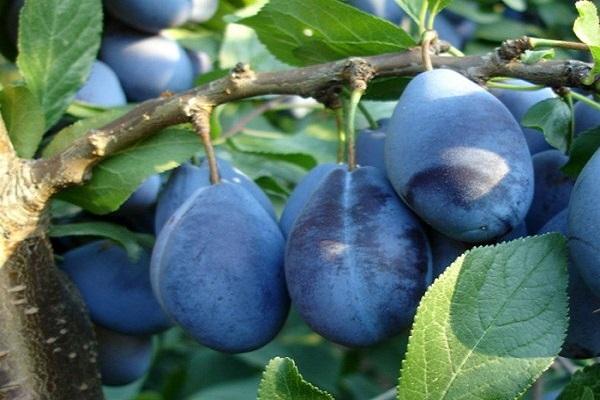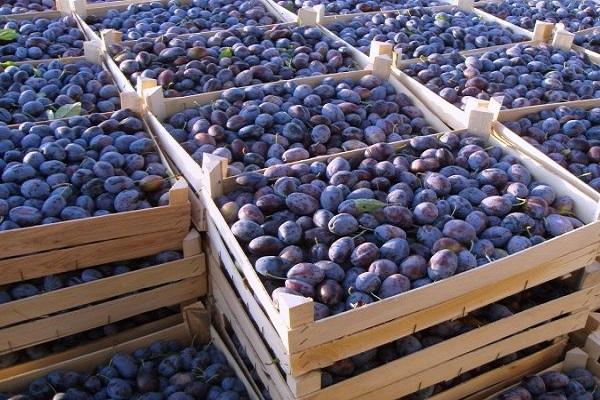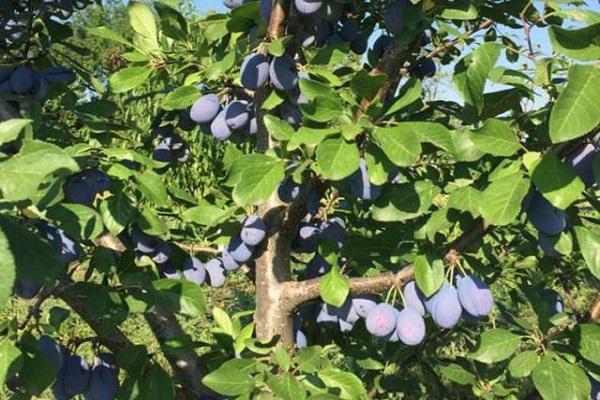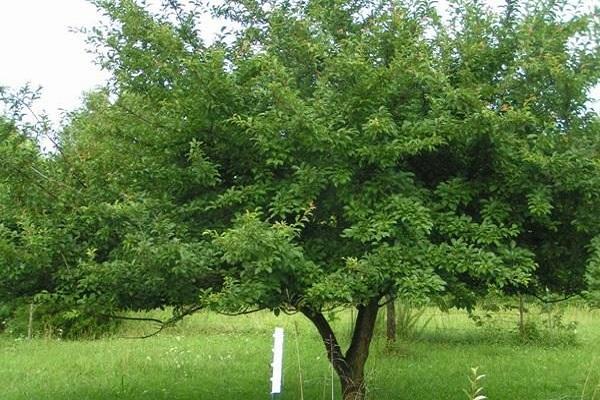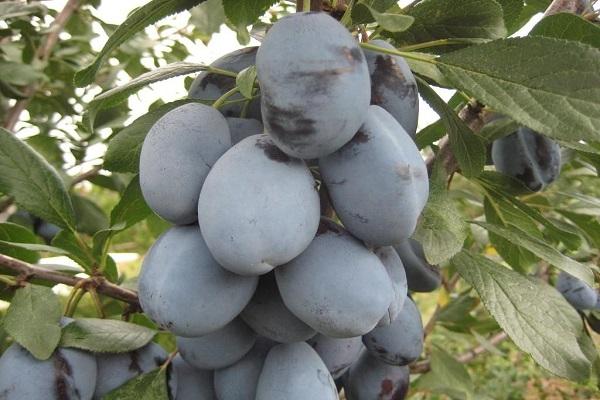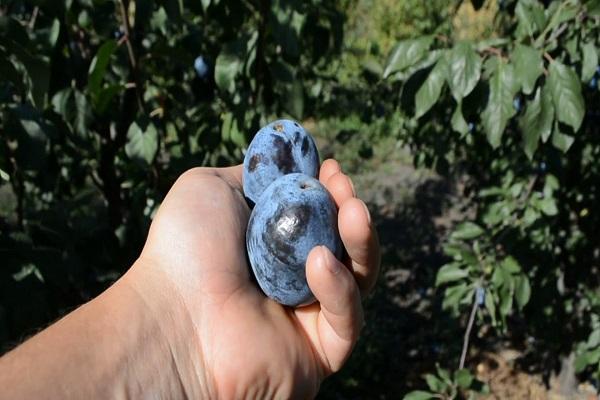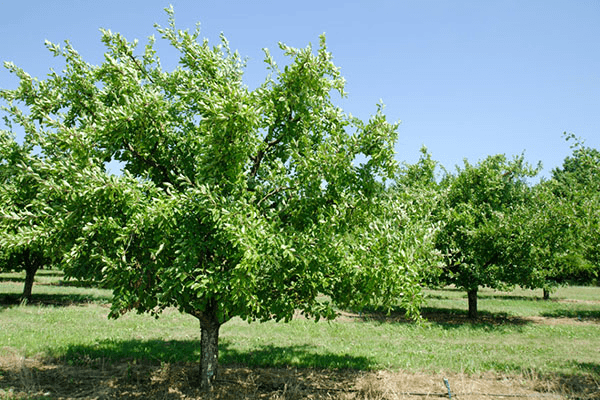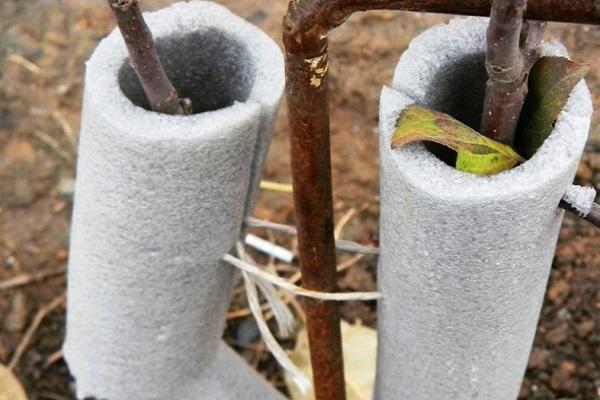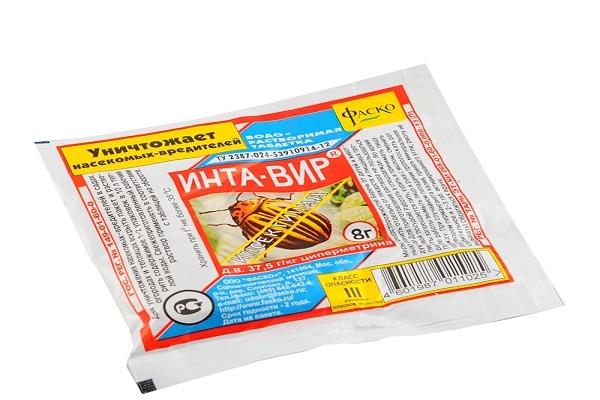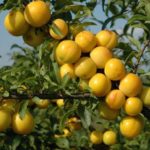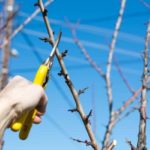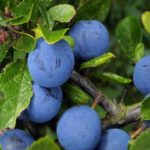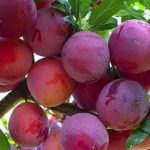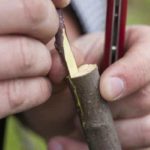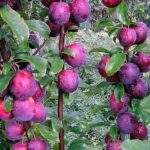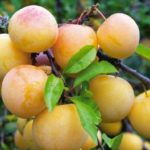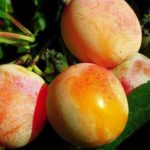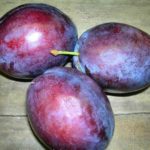A variety of large plum, Stanley or “American,” used to grow in the North Caucasus, but it began to be grown in other regions of the Russian Federation, CIS countries, the USA, and the EU. The variety is famous for its high resistance to frost, changeable weather, and moderate drought. It is classified as a Hungarian plum, purple in color with dark spots. This species has ventral stripes that distinguish it from other varieties. The taste of the pulp is sugar-dessert. Hungarian prunes make excellent prunes. To successfully raise an American woman, you need to familiarize yourself with all the nuances.
- Description of Stanley plum
- Pros and cons of the variety
- The nuances of growing a plant
- Optimal planting dates
- Landing site and its preparation
- Selection and preparation of seedlings
- Good and bad proximity to cultures
- Planting process
- Tree care
- Irrigation scheme
- Plum feeding
- Subtleties of pruning
- Preparing for winter
- Treatment of crops against diseases and pests
- Cleaning and storage rules
Description of Stanley plum
An adult tree reaches up to 3 meters high and has a massive crown. The bark is dark brown and the straight and rounded column elegantly holds the branches. The shoots have a reddish color, and the leaves have a special pigmentation, which is often mistaken for a disease. Flowering occurs in April, after the thaw. The Stanley plum variety produces a harvest by the end of 4 years from planting. Full ripening occurs in mid or late September. The berries have a large seed; it is easily separated from the yellow pulp. According to agronomists, the latter was estimated at 4.9 points. The weight of the fruit is small, only 50 grams.
Brief description of Stanley plum:
- high resistance to frost down to -35;
- does not tolerate stuffiness, severe drought, requires abundant watering in hot weather;
- needs vaccinations in winter.
With proper care, one tree produces about 70 kilograms of fruit.
Pros and cons of the variety
The Stanley plum variety offers a number of pros and cons. You must familiarize yourself with them before boarding.
| Advantages | Flaws |
| High frost resistance | Plum is susceptible to rot |
| Plum easily carries diseases and viruses, without additional preventive measures. | High requirements for soil fertility |
| The variety is self-fertile, does not require pollinators | |
| It takes root both in the Moscow region and in Siberia | |
| Plum peel is not subject to abrasion, cracks, strong |
According to reviews from experienced gardeners, the Stanley plum variety produces tasty fruits with additional moisture and fertilizing. The tree is unpretentious in care and easily survives transplantation.
The nuances of growing a plant
Growing a Stanley plum is simple; it is only important to observe the following nuances:
- choose the right planting site and prepare the soil;
- water in a timely manner, remove weeds, loosen, mulch, feed, trim branches and treat the trunk from pests and diseases.
Plum loves moisture and requires 1 watering per week, 10 liters per tree.
Optimal planting dates
In the south, Stanley plum shoots can be planted at any time, in spring or autumn.
- If planting is planned for spring, do this before sap flow begins. Around the first days of March, after the snow melts.
- In autumn, plant seedlings before the first frost. If a seedling was purchased in November, there is no point in planting it before winter. It is better to postpone the process to spring. “Preserve” the seedling by digging it into the soil, covering it with spruce branches, and later with snow. Remove before planting in spring.
In the middle zone, the best time for planting is spring, since planting material that was planted in the fall does not have time to get stronger by winter.
Landing site and its preparation
Stanley plum prefers warmth, so it is better to plant the variety in a place well lit by sunlight, where north winds do not blow. The tree will “thank you” for the fertile land with large fruits. The soil should warm up to a depth of 1 meter. It is advisable to plant plums on the south side, in the first rows. There must be underground water in the ground. If there are none, you will have to water the tree every 4 weeks.
The American plum loves fertilizer. It must be planted on site in a plot of at least 9 square meters in area. Give preference to slightly alkaline, neutral sandy or loamy soils. Acidic soil must be deoxidized with dolomite flour.If there is part of the land with close groundwater, place grated bricks on the bottom. They stimulate the growth of the root system and protect the Stanley plum from freezing.
Selection and preparation of seedlings
Before purchasing Stanley plum seedlings, you need to take into account the terrain.
- In regions with a warm climate, plant own-rooted seedlings.
- In colder areas, it is advisable to choose planting material on rootstocks.
It is worth buying Stanley plum shoots in specialized stores or the market. A healthy seedling has the following characteristics:
- the roots are not damaged, without rot or fungus, long;
- branches must be intact, flexible, strong, without overdried or deformed areas;
- the desired age of seedlings is 1-2 years, without leaves.
If the seedling was purchased in a container, you need to take it out along with a lump of soil and place it in an excavated hole.
How to prepare plums for planting:
- 2-3 days in advance, place the rhizome in a solution of potassium parchment at room temperature;
- treat the root system with “Heteroauxin” to improve the survival rate of the plant.
3-4 hours before planting, dip the roots into a mash of clay and manure of a creamy consistency.
Good and bad proximity to cultures
Any fruit trees grow well next to the Stanley plum. It is important that there is a distance of 3 meters between her and her neighbors. The best companions for plums are cherries or cherries. Apple trees, pear trees and other fruit trees get along worse. It is not advisable to plant berry crops nearby.
Planting process
Experienced gardeners advise planting plums in March, before pollen begins. When planted in autumn, seedlings take root worse. The planting pit is prepared in the fall, until the first frost.Then she will have time to settle down. The size of the hole and the laying technique depend on the fertility of the soil.
- The depth of the hole is 60-100 centimeters.
- The diameter of the recess is 80-100 centimeters.
- If the soil is fertile, remove the top layer and set it aside separately, dig up the bottom. Combine the removed top with humus in a 1:1 ratio and pour it into a mound.
- When planting plums in infertile soil, remove the turf, chop it and place it separately. Combine 2 buckets of rotted manure, 1 liter of ash. Place the combination on the bottom and add fertile soil from another place.
Planting a Stanley plum does not involve any special nuances. This is done this way:
- drive a support stake from the top of the hill to the bottom of the hole;
- Fill the hole with plenty of water;
- plant the seedlings near the support and tie them so that the root collar is above the surface;
- distribute the rhizome over the mound, slowly sprinkle with earth, tamp tightly;
- step back half a meter from the trunk, use a hoe to make a groove in a circle, pour 3 buckets of water into it;
- mulch the area around the trunk.
The process of planting plums is simple, the main thing is to strictly follow the instructions.
Tree care
Subsequent care of the Stanley plum involves the introduction of drugs that stimulate the growth of seedlings. The procedure is carried out every 3 months, for 1 and 2 years from the moment of planting. You will need 2 Heteroauxin tablets, which are diluted in a 10-liter bucket of water. Water the ditch of each plum seedling with the mixture. It is also necessary to trim the tree on time, water it, fertilize it, treat it against pests and diseases, and mulch it.
Irrigation scheme
In the first year after planting, Stanley plum requires utmost attention. The seedling must be watered constantly, approximately like this:
- the watering rate is 50-60 liters per 1 square meter;
- moisten the soil to a depth of 40 centimeters.
Water the plum tree without waiting for the soil to dry out. Irrigation scheme:
- during the formation of ovaries;
- 2 weeks before harvest;
- after harvesting plums.
Autumn watering will take place in October, before the first frost.
Plum feeding
In the second year after planting the plum, you can fertilize it with a solution of urea, nitrophoska, potassium sulfate and superphosphate. There should be 2 tablespoons of each fertilizer.
When the Stanley plum begins to bear fruit, fertilize it as follows:
- before flowering - 2 tablespoons of urea solution, the same amount of potassium sulfate;
- during the period of filling plums - with a solution of urea in the amount of 2 tablespoons and 3 tablespoons of nitrophoska;
- after harvesting - a solution of potassium sulfate - 2 spoons and superphosphate - 3 spoons.
Dilute the components in 10 liters of water. In addition to mineral fertilizers, you can use organic fertilizers for plums. Every year at the beginning of summer, add a bucket of manure and 250 grams of dolomite flour to the ground near the trunk.
Subtleties of pruning
In order for the Stanley plum to bear a lot of fruit, it is necessary to regularly form the crown. After planting, “trim” the seedling by pinching the apical bud so that side shoots begin to grow. From them the future skeletal branches of the tree are formed. For a 2-year-old seedling, shorten the central conductor and side branches by a third. Every 6 years, carry out sanitary pruning of the plum once, which helps eliminate pests and diseases.
Preparing for winter
It is advisable to insulate young trees before winter using the following options:
- Protect the plum from the cold by wrapping it in burlap and nylon tights.Black material is not suitable; the wood may get sunburned.
- To insulate the roots, mulch the tree trunk area with a layer of soil and sawdust 6-7 centimeters high.
Stanley plum trees also need to be protected from rodents. This is done in several ways.
- Metal mesh fencing.
- Cover with a box if the tree is small. The empty space is filled with sawdust, pine needles, and newspapers.
- Hut. They make a frame from willow twigs sticking out of the ground. Hay, straw, and leaves are placed on top. Cover the structure with roofing felt.
Mature trees need whitewashing of the trunk - it is covered with a solution of slaked lime with copper sulfate and office glue.
Treatment of crops against diseases and pests
The American plum has strong immunity to disease, but experienced gardeners recommend additional protection.
- To protect the tree from disease attacks, treat it with fungicides.
- If the fungus has already infected the plum crown, burn it partially or completely.
- They fight aphids with the help of Intavir.
If the plum tree is attacked by rodents, look for them in the crown and destroy them.
Cleaning and storage rules
The ripening time of fruits depends on the region. In the middle zone, the harvest occurs at the end of August or beginning of September. Carry out the harvesting in stages, removing the fruits in 2-3 approaches in dry weather. If you need to transport the plum, remove it a little unripe. You cannot stand on the branches, they are fragile, it is better to use a ladder.
Overripe fruits are soft, have an unpleasant taste, and fall to the ground. There is no time to delay harvesting. Start the procedure from the lower branches, gradually moving to the top. It is recommended not to wash off the waxy coating; it helps the fruit stay fresh.

